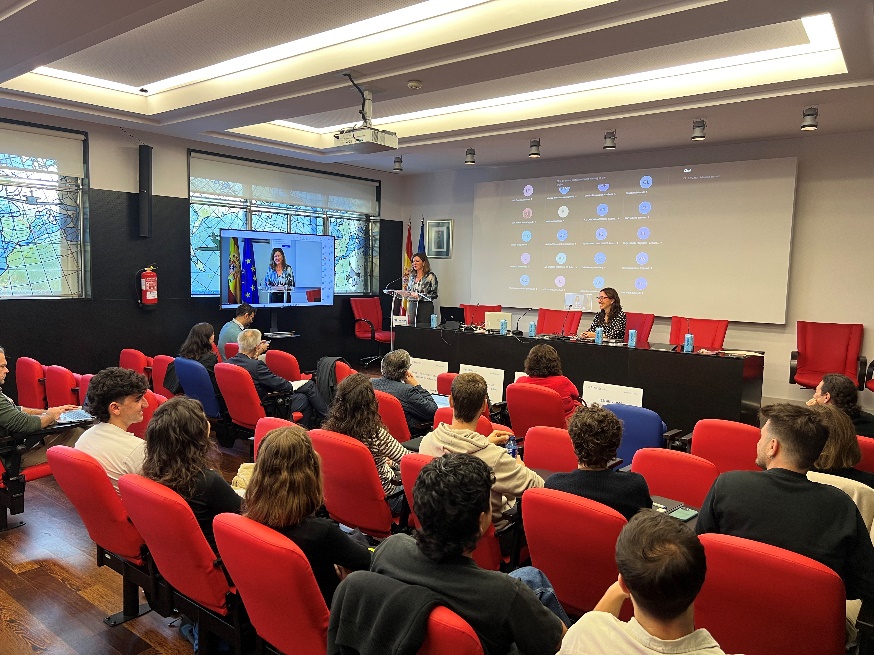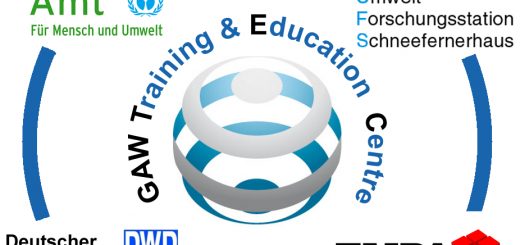Celebration of the Workshop “Creation of a Greenhouse Gas Emissions Monitoring System in Spain”
Clic here for spanish version
BSC and AEMET drive greenhouse gas monitoring in Spain
- Representatives of different institutions gathered at the RESPIRE-CLIMATE workshop to present tools and initiatives supporting Spain’s efforts in greenhouse gas (GHG) mitigation and monitoring.
- The project, led by the Barcelona Supercomputing Center (BSC) and the Spanish Meteorological Agency (AEMET), has been endorsed by the World Meteorological Organization (WMO) through the IG3IS program, placing Spain among the few countries with globally recognized systems.
- The RESPIRE-CLIMATE web app will allow users to visualize CO₂ and CH₄ data with high temporal and spatial resolution.
The headquarters of the Spanish Meteorological Agency (AEMET) in Madrid hosted the RESPIRE-CLIMATE workshop on November 12, a key event aimed at strengthening Spain’s greenhouse gas (GHG) emission monitoring system. Organized by the Barcelona Supercomputing Center – National Supercomputing Center (BSC-CNS) and AEMET, the event brought together more than 80 participants in person and online.

Figure 1. The President of AEMET, María José Rallo del Olmo, opening the workshop and welcoming the participants.
The workshop featured contributions from the Ministry for the Ecological Transition and the Demographic Challenge (MITECO) through the Sub-Directorate General for Pollution Prevention and the Spanish Office for Climate Change (OECC), which presented Spain’s national efforts for GHG quantification and mitigation. Participants also explored the contributions of RESPIRE-CLIMATE and the new web app under development, along with shared experiences from the Universitat Autònoma de Barcelona (UAB), the Universitat Politècnica de València (UPV), and the REMEDIA network.
The event also included an international perspective, with contributions from the Copernicus Atmosphere Monitoring Service (CAMS) National Collaboration Program, the Integrated Carbon Observation System (ICOS), and GHGSAT, concluding with an interactive discussion session on the future of Spain’s GHG monitoring system.
RESPIRE-CLIMATE: An internationally recognized system
During the event, participants highlighted the international recognition of RESPIRE-CLIMATE by the Integrated Global Greenhouse Gas Information System (IG3IS), an initiative of the World Meteorological Organization (WMO). This endorsement positions the system as a relevant tool for high-resolution monitoring of carbon dioxide (CO₂) and methane (CH₄).
“This recognition is more than a technical achievement, it represents a guarantee of quality and transparency, both essential for building trust in climate action,” said Marc Guevara, scientific coordinator of RESPIRE and researcher in the Earth Sciences Department at BSC.
RESPIRE-CLIMA is developing a high-resolution web app
- The RESPIRE-CLIMATE platform will offer interactive maps and time series of carbon dioxide (CO₂) and methane (CH₄) with spatial and temporal resolutions of up to 1 km × 1 km and daily coverage across Spain.
- It will also provide access to annual maps and year-to-year comparisons based on the official inventory reported by MITECO.
- Users will be able to filter emissions data by sectors, such as transport or industry, and by specific regions, including autonomous communities, metropolitan areas, the Iberian Peninsula (including the Balearic Islands), and the Canary Islands.
Paula Castesana, BSC researcher and internal project coordinator for RESPIRE-CLIMATE, affirms, “with this workshop, Spain strengthens its commitment to climate action, joining the select group of countries that have GHG monitoring systems recognized by international initiatives.”
“For AEMET, participating in RESPIRE-CLIMA means reinforcing its commitment to providing high-quality scientific information that serves the public interest. Monitoring and observing the composition of the atmosphere, as well as advanced modelling of it, is an essential step towards consolidating a robust greenhouse gas monitoring system at the national level, in line with current international efforts,” said Yolanda Luna, Head of the Development and Applications Department at AEMET.



